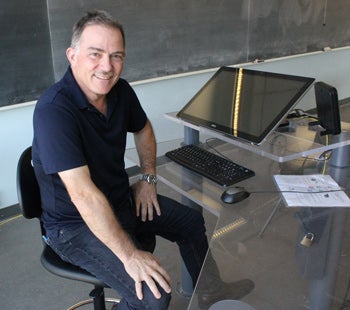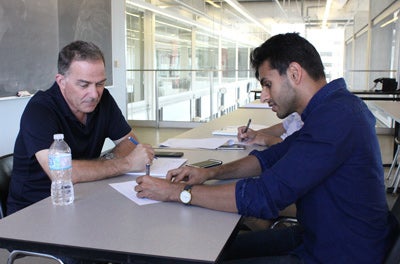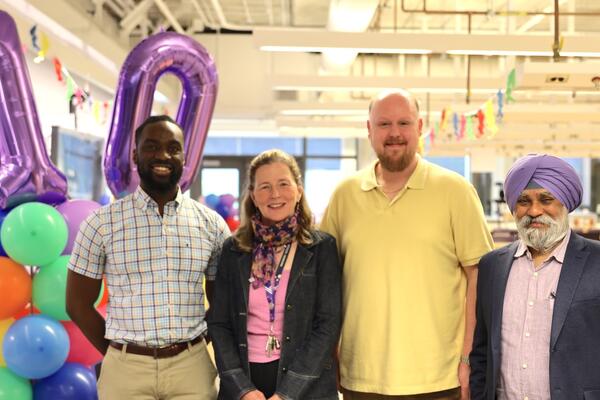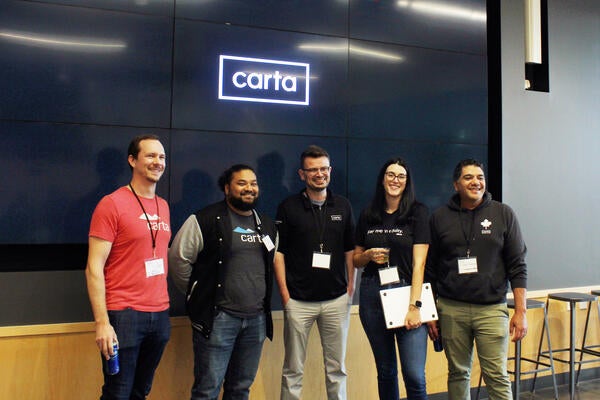
Preparing engineers to tackle complex design problems
Program created to give student both the toold and mindset to strategically tackle complex design problems

Program created to give student both the toold and mindset to strategically tackle complex design problems
By Brian Caldwell Faculty of EngineeringTo get at the heart of a unique design specialization within the Professional Master of Engineering (MEng) degree program at the University of Waterloo, instructor Oscar Nespoli likes to use chess as an analogy.
 It is entirely possible, of course, to teach new chess players how the various pieces move and arm them with some basic strategies to take on an opponent.
It is entirely possible, of course, to teach new chess players how the various pieces move and arm them with some basic strategies to take on an opponent.
But the only way for them to get really good at the game, to master its subtleties and complexities, is to play and keep playing until they learn how to apply those lessons on their own.
“It’s the same with design,” says Nespoli. “You have to do it.”
That explains why hands-on projects form the core of the Graduate Diploma in Design (GDD) specialty, which is open to graduate engineers, working professionals and internationally trained engineers.
Offered by the Department of Mechanical and Mechatronics Engineering, the program gives students both the tools and the mindset to strategically tackle complex design problems, plus plenty of practice actually solving them.
“They’ll leave here confident that they can do design,” says Nespoli, who created the program a decade ago with Professor Steve Lambert. “That’s the first thing hiring managers in industry look for – the confidence to tackle tough problems.”
To qualify for the design specialization, a process that involves submission of a design project portfolio, students must first get accepted into the MEng coursework program.
Within the overall master’s degree, successful applicants then complete half of the required eight courses in the GDD option.
The focus of the first GDD course is on how to discover and formulate meaningful design challenges, then use creative techniques to develop novel, practical solutions, even when all of the necessary information isn’t immediately available.
Nespoli considers the initial step, stating the problem as clearly and concisely as possible, the key to the entire exercise. He challenges students to do it in just two words, a verb and a noun.
“It’s understanding the problem at a very, very fundamental level,” he says. “It sounds easy, but it’s very difficult.”

Lessons from that first class are applied in two studio courses in which students work on their own design projects, ideally ones provided by industry partners with real problems requiring solutions.
The hands-on approach is emphasized even more in a new co-op option that was added last year and proved popular with students looking to help pay for school and acquire practical experience.
“The co-op option is great for both the student and the employer,” Nespoli says of the four-month work term. “It acts as a protracted interview and is really a nice bridge to professional practice.”
To meet the requirements for a GDD specialty – which starts in the fall term and runs for 16 months with a co-op placement, or 12 months without co-op – students must also complete one of five specified graduate-level courses.
“Design means different things to different people, but in engineering it is having a systematic way to approach complex problems,” Nespoli says. “That is a really important competency for companies and for Canada to have – the ability to create and do it competitively against other players in the marketplace.”
Nespoli was a member of the organizing committee of the International Conference on Engineering Design – ICED17, held at the University of British Columbia in August 2017. Alongside Ola Isaksson, Nespoli conducted a workshop on Design Practice SIG Kickoff – Tackling Tough Design Challenges Together.

Read more
Here are the people and events behind some of this year’s most compelling Waterloo stories

Read more
The Pearl Sullivan Engineering IDEAs Clinic marks a decade of delivering experiential learning embedded in the real world and mentored by industry professionals

Read more
From AI-powered cap tables to complex valuation tools, Waterloo co-op students drive Carta’s innovation while shaping its engineering talent strategy
Read
Engineering stories
Visit
Waterloo Engineering home
Contact
Waterloo Engineering
The University of Waterloo acknowledges that much of our work takes place on the traditional territory of the Neutral, Anishinaabeg, and Haudenosaunee peoples. Our main campus is situated on the Haldimand Tract, the land granted to the Six Nations that includes six miles on each side of the Grand River. Our active work toward reconciliation takes place across our campuses through research, learning, teaching, and community building, and is co-ordinated within the Office of Indigenous Relations.